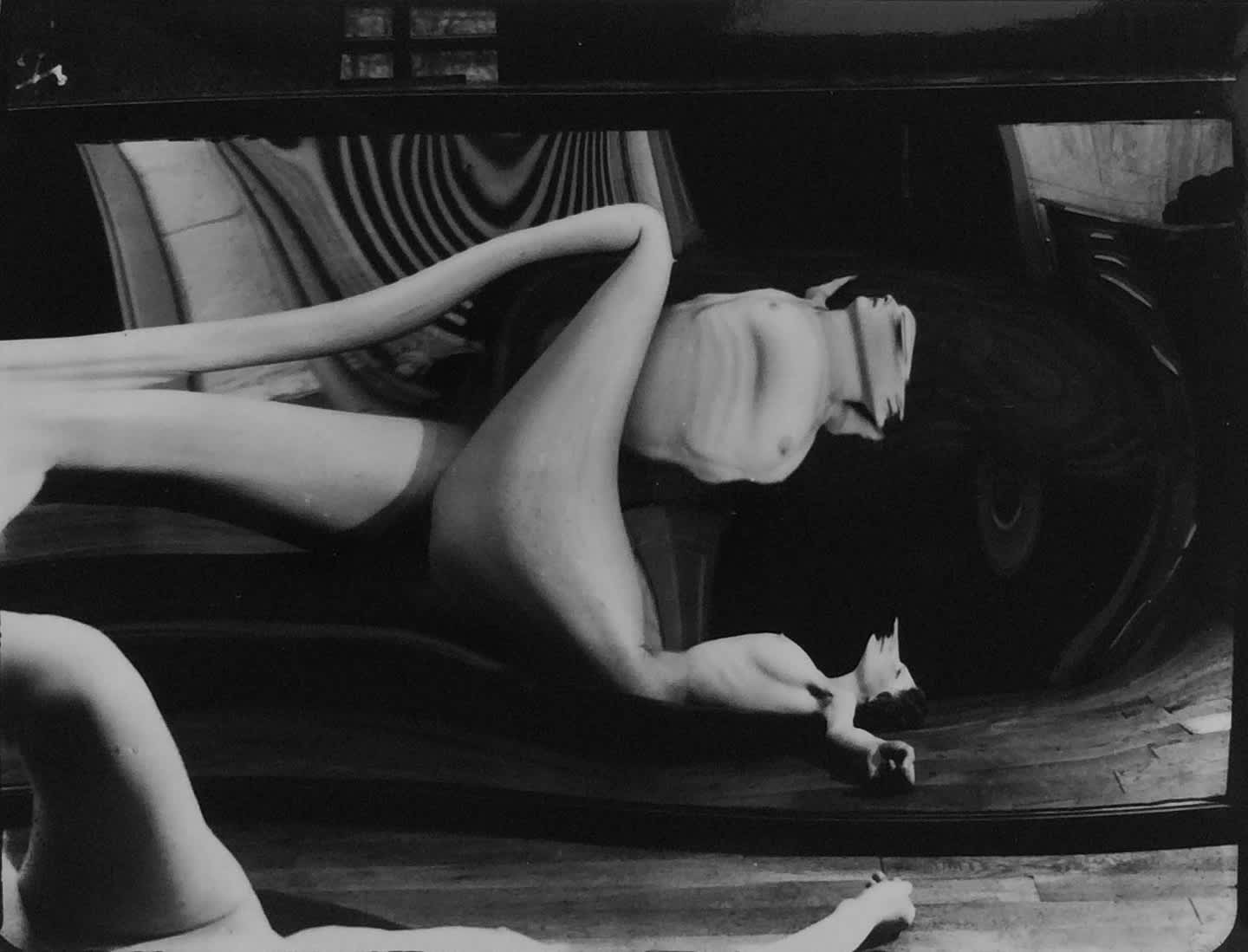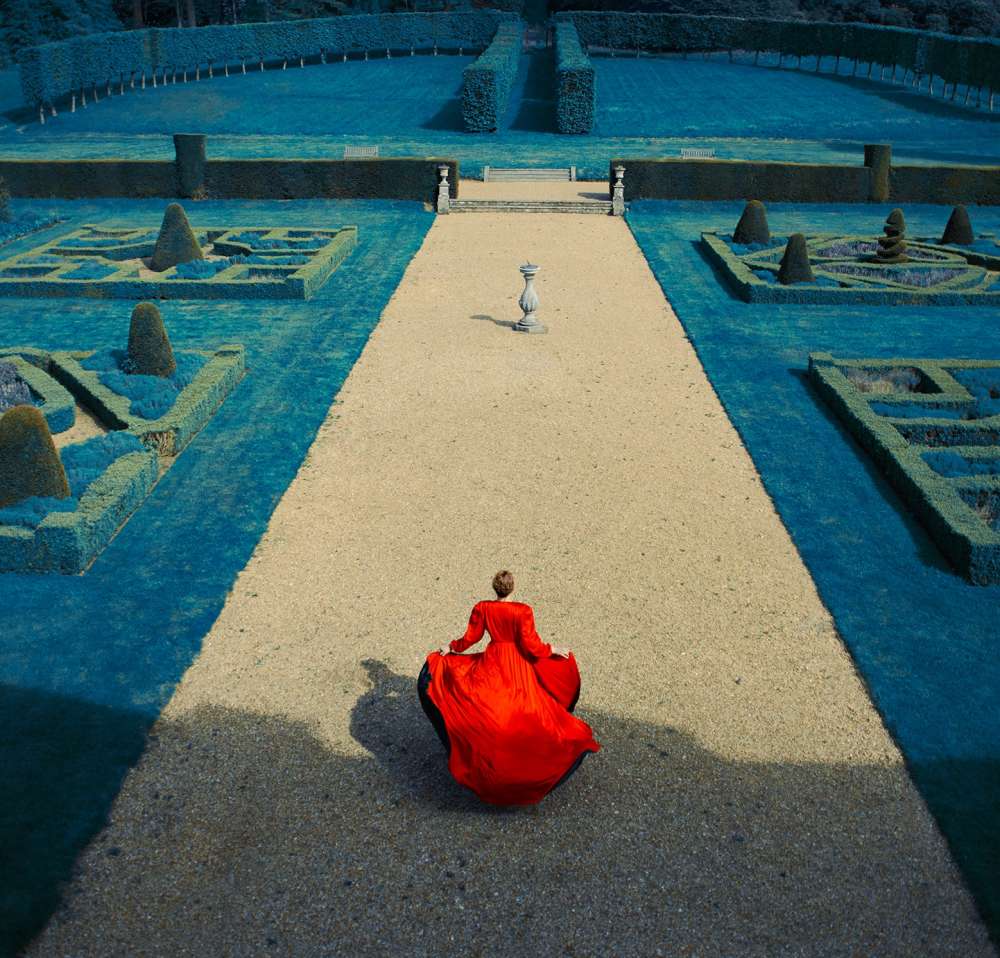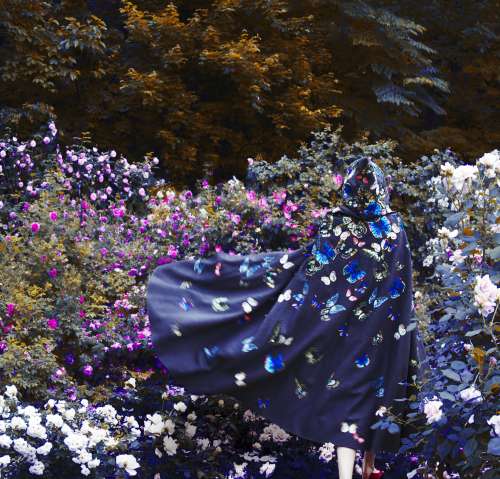Invited in 1933 to produce photographs for La Sourire, a French magazine that the young Hungarian émigré in Paris later described as “satiric, risqué,” Kertész posed nude female models in front of distorting mirrors and produced a body of work that would form, 40 years later, the contents of a book titled Distortions. The Jackson Fine Art exhibition title “Girl Before a Mirror” is a reference to the 1932 Picasso painting that established a different way of distorting the image of the female body. Several possible essays, whether feminist or formalist, could follow from that implied confluence of painting and photography.
Erik Madigan Heck is rightly viewed as a descendant of that dialogue between painting and photography, and of the idea of distorting, in his case, a body not only clothed but extravagantly so, to the point of obscuring the body itself. In open dialogue with the fashion photography with which he has established his reputation, Heck’s fine-art work turns fashion into a tool of abstraction, in photos that are more compositions in vivid color and complex patterns than unambiguous images. His photographs are as much distortions of the literal body in the second decade of the 21st century as Kertész’s funhouse-mirror productions were in 1933. Both photographers reflect strikingly their respective art-historical moments without being imitators of anyone else’s style.






